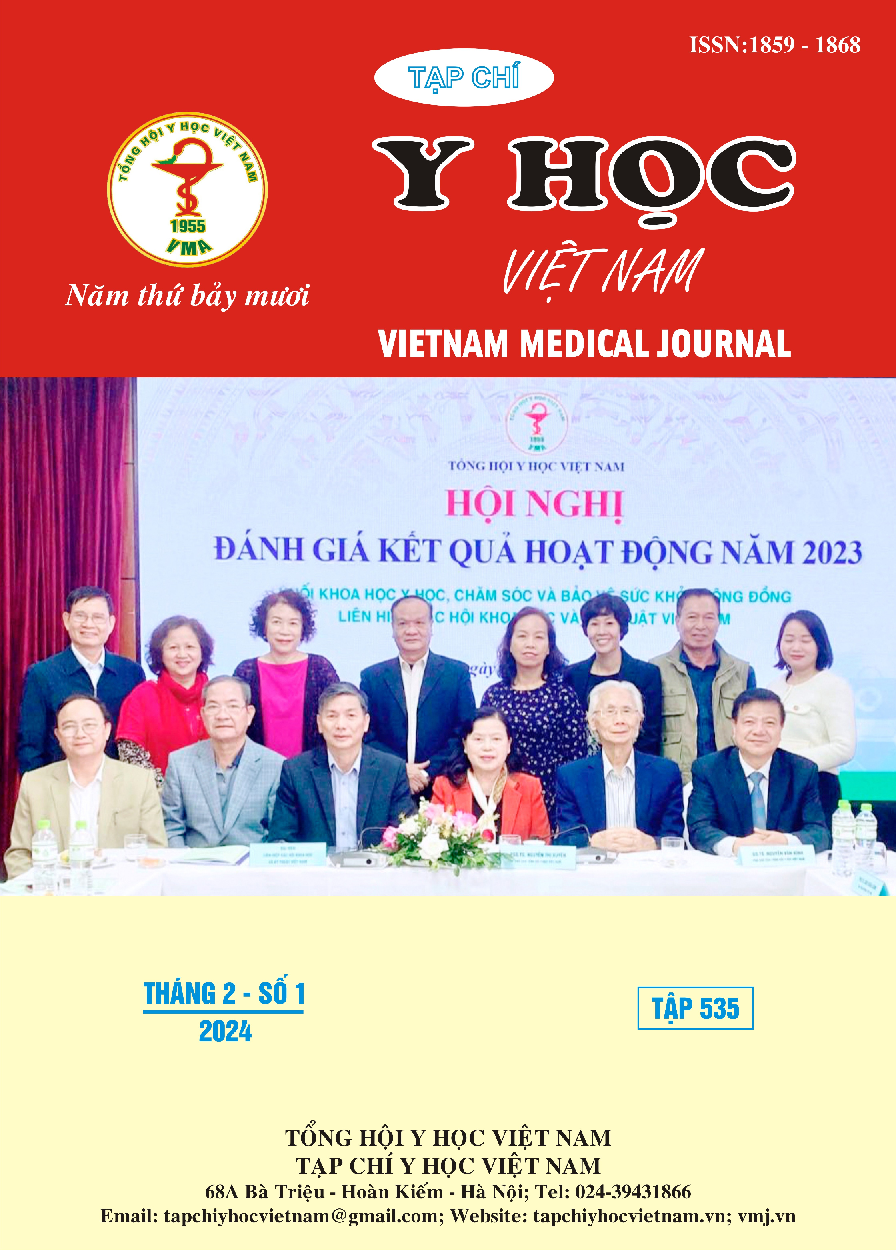EVALUATE THE RESULTS OF TREATMENT OF BREAST ABCESSESES IN BREASTFEEDING WOMEN AT HA NOI OBSTETRICS AND GYNECOLOGY HOSPITAL
Main Article Content
Abstract
Objective: Evaluate the results of treatment of breast abcesseses in breastfeeding women at ha noi obstetrics and gynecology hospital. Materials and method: This is a cross-sectional study, was performed 102 breastfeeding women diagnosed with breast abscesses who came for examination and treatment at Hanoi Obstetrics Hospital from April 2023 to September 2023. Results: Breast abscesses in breastfeeding women accounted for 3.84% of women treated for postpartum milk duct obstruction at Ha Noi Obstetrics and Gynecology Hospital. The average age of the study subjects was 27,8±3,6. The most common age group is 18-35, accounting for 88.2%. The majority of patients giving birth for the first time was 63.7%, 20.6% of patients had a history of postpartum breast abscess in previous births. The majority of patients were treated with incision and drainage with 87.3%, the main incision was the radial incision, accounting for 94.4% with a cure rate of 94.4%. The majority of patients were treated with one type of antibiotic with 87.3%. Most patients had good scar healing with 93.1%, complications such as milk fistula, recurrence account for only 2.9% and 2%. Only 2% of patients complain about breast aesthetics after treatment. After treatment, 87.3% of patients were still breastfeeding on both sides. Conclusion: Treatment of breast abscesses with incision and drainage and aspiration under ultrasound is highly effective, most patients still breastfeed on both sides after treatment.
Article Details
References
2. L. H. Amir, D. Forster, H. McLachlan, and J. Lumley, ‘Incidence of breast abscess in lactating women: report from an Australian cohort’, BJOG Int. J. Obstet. Gynaecol., vol. 111, no. 12, pp. 1378–1381, Dec. 2004, doi: 10.1111/j.1471-0528.2004.00272.x.
3. C. Dener and A. İnan, ‘Breast Abscesses in Lactating Women’, World J. Surg., vol. 27, no. 2, pp. 130– 133, Feb. 2003, doi: 10.1007/s00268-002-6563-6.
4. J. D. Berna-Serna, M. Madrigal, and J. D. Berna-Serna, ‘Percutaneous management of breast abscesses. an experience of 39 cases’, Ultrasound Med. Biol., vol. 30, no. 1, pp. 1–6, Jan. 2004, doi: 10.1016/ j.ultrasmedbio. 2003.10.003.
5. WHO 2000. World Health Organization: Mastitis: Causes and Management. Publication Number WHO/FCH/ CAH/00.13, World Health Organization, Geneva, 2000.
6. C. Colin, A. G. Delov, N. Peyron-Faure, M. Rabilloud, and M. Charlot, ‘Breast abscesses in lactating women: evidences for ultrasound-guided percutaneous drainage to avoid surgery’, Emerg. Radiol., vol. 26, no. 5, pp. 507–514, Oct. 2019, doi: 10.1007/s10140-019-01694-z.
7. Đoàn Tú Anh (2021) Nghiên cứu chẩn đoán và áp xe vú tại Bệnh viện Phụ sản Trung Ương. Luận văn Thạc sỹ y học, Trường Đại học Y Hà Nội. 2021


